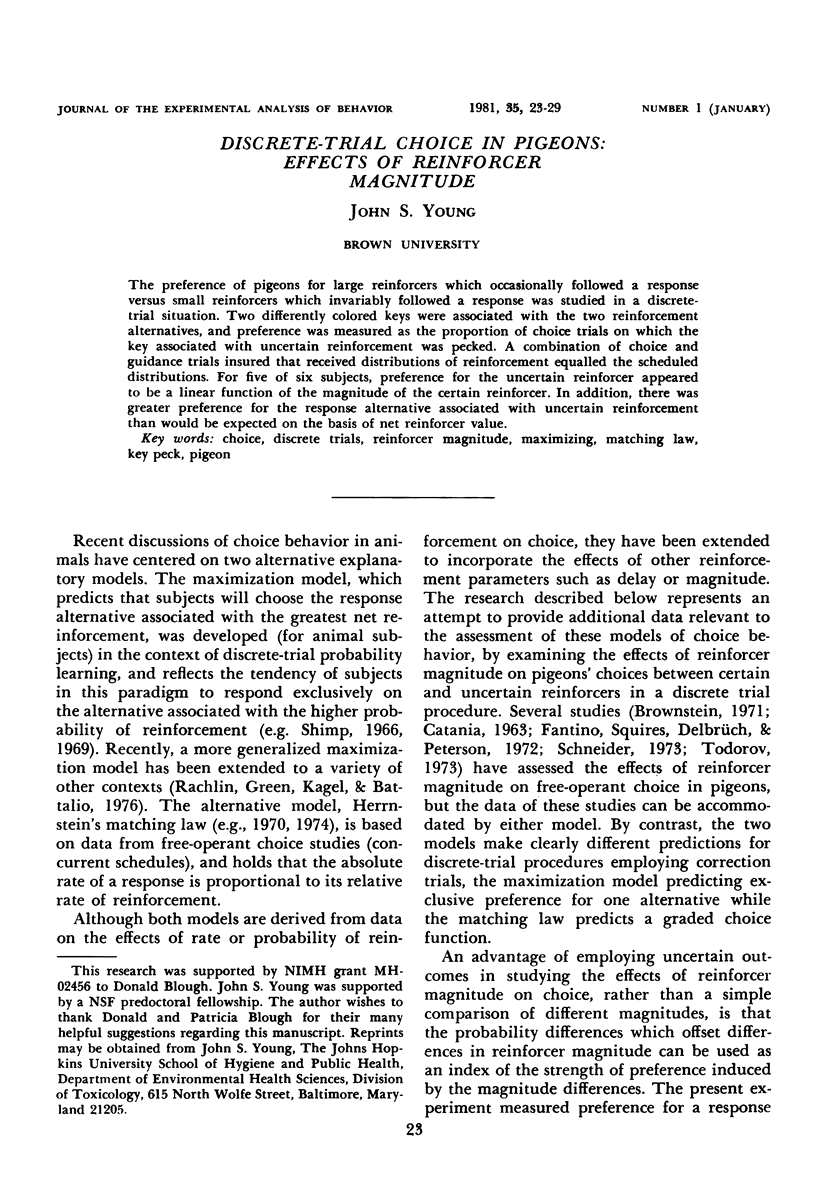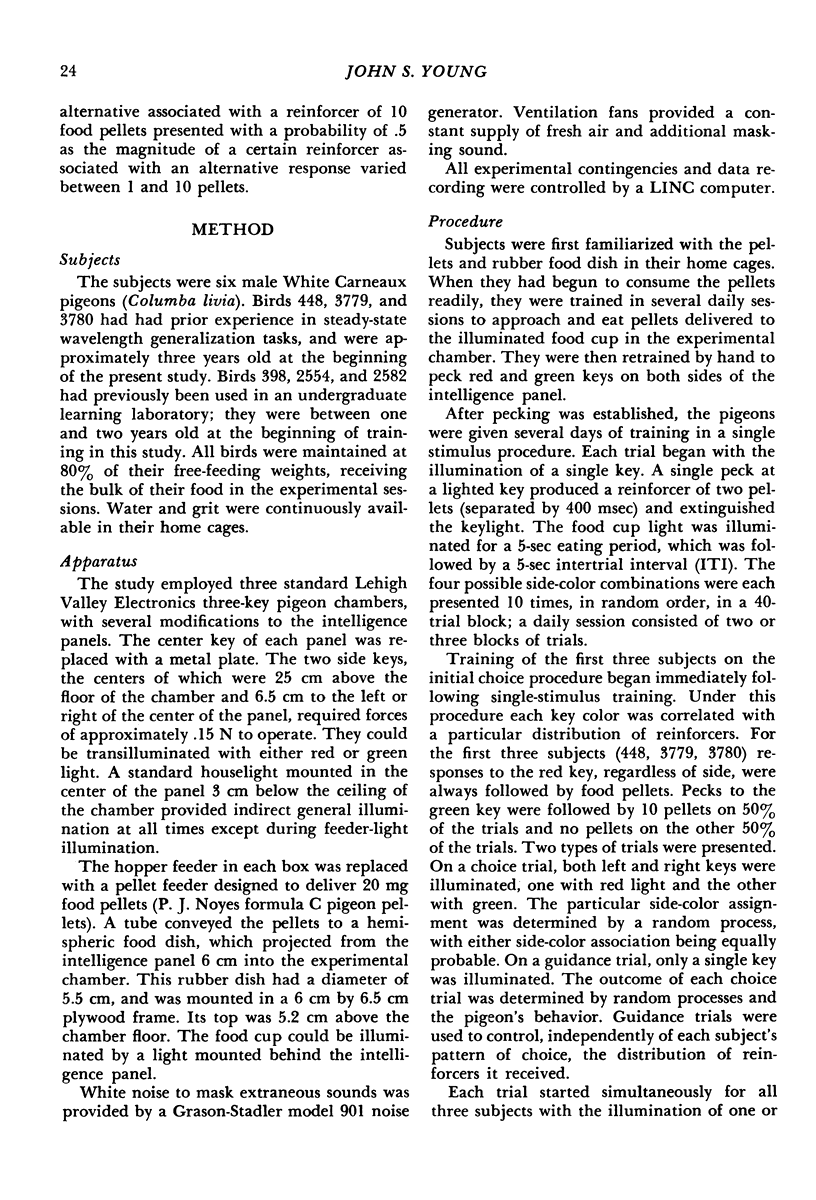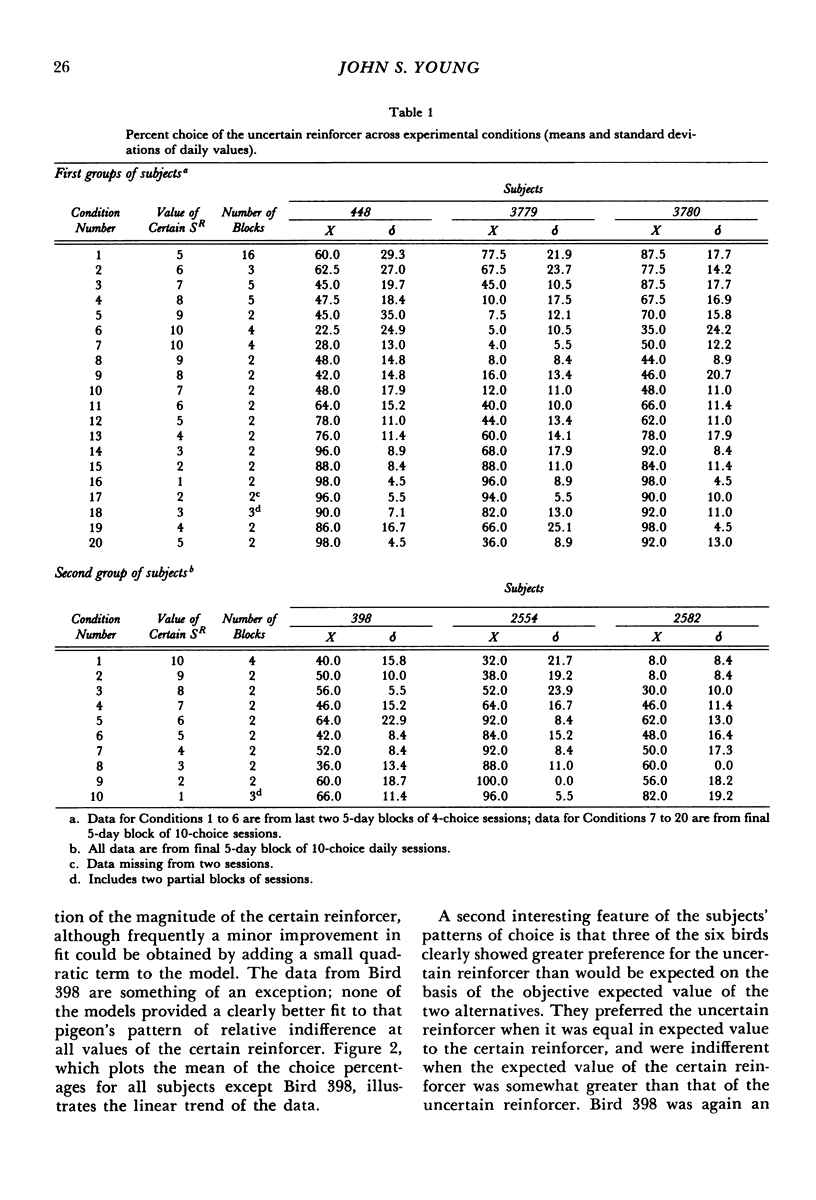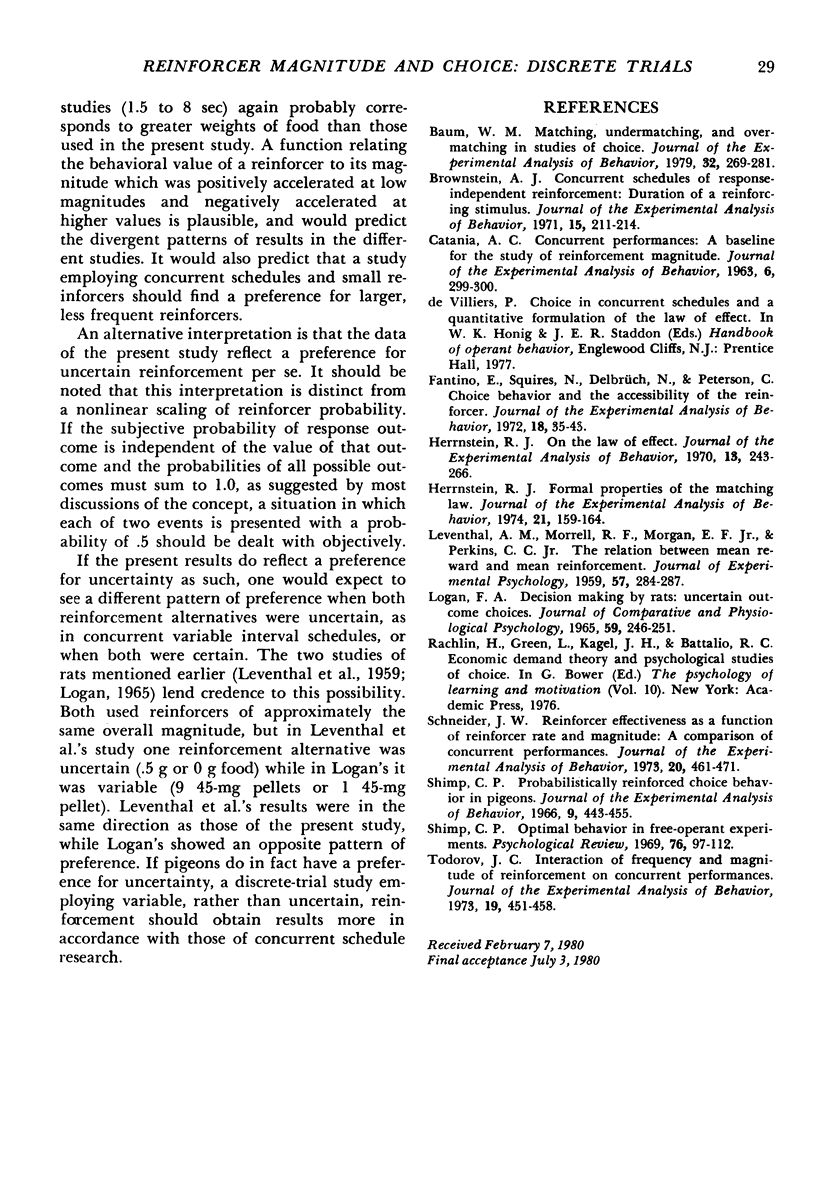Abstract
The preference of pigeons for large reinforcers which occasionally followed a response versus small reinforcers which invariably followed a response was studied in a discrete-trial situation. Two differently colored keys were associated with the two reinforcement alternatives, and preference was measured as the proportion of choice trials on which the key associated with uncertain reinforcement was pecked. A combination of choice and guidance trials insured that received distributions of reinforcement equalled the scheduled distributions. For five of six subjects, preference for the uncertain reinforcer appeared to be a linear function of the magnitude of the certain reinforcer. In addition, there was greater preference for the response alternative associated with uncertain reinforcement than would be expected on the basis of net reinforcer value.
Keywords: choice, discrete trials, reinforcer magnitude, maximizing, matching law, key peck, pigeon
Full text
PDF






Selected References
These references are in PubMed. This may not be the complete list of references from this article.
- Baum W. M. Matching, undermatching, and overmatching in studies of choice. J Exp Anal Behav. 1979 Sep;32(2):269–281. doi: 10.1901/jeab.1979.32-269. [DOI] [PMC free article] [PubMed] [Google Scholar]
- Brownstein A. J. Concurrent schedules of response-independent reinforcement: duration of a reinforcing stimulus. J Exp Anal Behav. 1971 Mar;15(2):211–214. doi: 10.1901/jeab.1971.15-211. [DOI] [PMC free article] [PubMed] [Google Scholar]
- CATANIA A. C. Concurrent performances: a baseline for the study of reinforcement magnitude. J Exp Anal Behav. 1963 Apr;6:299–300. doi: 10.1901/jeab.1963.6-299. [DOI] [PMC free article] [PubMed] [Google Scholar]
- Fantino E., Squires N., Delbrück N., Peterson C. Choice behavior and the accessibility of the reinforcer. J Exp Anal Behav. 1972 Jul;18(1):35–43. doi: 10.1901/jeab.1972.18-35. [DOI] [PMC free article] [PubMed] [Google Scholar]
- Herrnstein R. J. Formal properties of the matching law. J Exp Anal Behav. 1974 Jan;21(1):159–164. doi: 10.1901/jeab.1974.21-159. [DOI] [PMC free article] [PubMed] [Google Scholar]
- Herrnstein R. J. On the law of effect. J Exp Anal Behav. 1970 Mar;13(2):243–266. doi: 10.1901/jeab.1970.13-243. [DOI] [PMC free article] [PubMed] [Google Scholar]
- LEVENTHAL A. M., MORRELL R. F., MORGAN E. F., Jr, PERKINS C. C., Jr The relation between mean reward and mean reinforcement. J Exp Psychol. 1959 May;57(5):284–287. doi: 10.1037/h0044878. [DOI] [PubMed] [Google Scholar]
- LOGAN F. A. DECISION MAKING BY RATS: UNCERTAIN OUTCOME CHOICES. J Comp Physiol Psychol. 1965 Apr;59:246–251. doi: 10.1037/h0021850. [DOI] [PubMed] [Google Scholar]
- Schneider J. W. Reinforcer effectiveness as a function of reinforcer rate and magnitude: a comparison of concurrent performances. J Exp Anal Behav. 1973 Nov;20(3):461–471. doi: 10.1901/jeab.1973.20-461. [DOI] [PMC free article] [PubMed] [Google Scholar]
- Shimp C. P. Probabilistically reinforced choice behavior in pigeons. J Exp Anal Behav. 1966 Jul;9(4):443–455. doi: 10.1901/jeab.1966.9-443. [DOI] [PMC free article] [PubMed] [Google Scholar]
- Todorov J. C. Interaction of frequency and magnitude of reinforcement on concurrent performances. J Exp Anal Behav. 1973 May;19(3):451–458. doi: 10.1901/jeab.1973.19-451. [DOI] [PMC free article] [PubMed] [Google Scholar]


